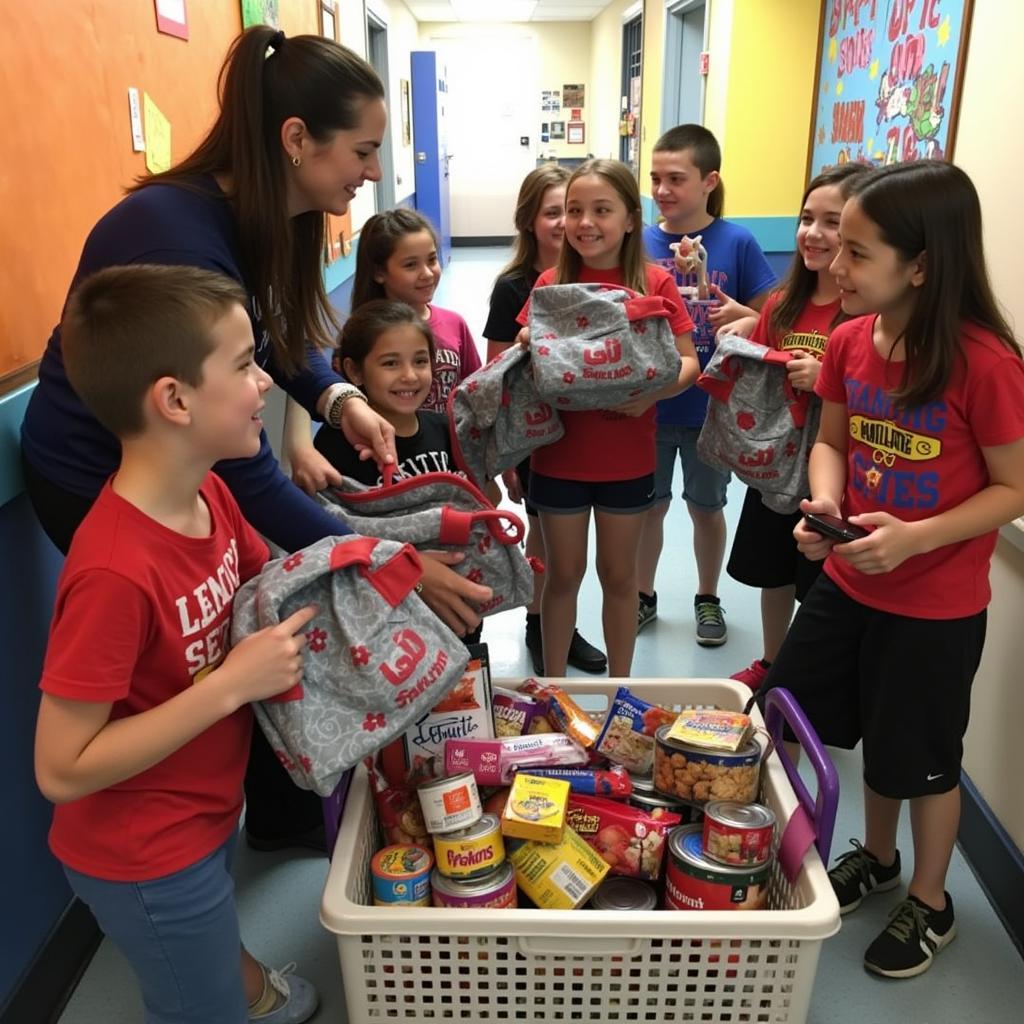Grants For Backpack Food Programs are a vital lifeline for children facing food insecurity, ensuring they have access to nutritious meals over the weekends and holidays. These programs discreetly provide backpacks filled with non-perishable food items to children identified as at-risk, bridging the gap between school meals and ensuring they have enough to eat when they’re not in a school setting. This article will explore the landscape of grants for backpack food programs, how these programs operate, and the impact they have on children’s well-being.
Understanding the Need for Backpack Food Programs
Many children rely on free or reduced-price meals provided at school. When school is out, these children are often left without consistent access to nutritious food. Backpack food programs address this critical need. These programs provide a sense of security for children, knowing they’ll have something to eat when they’re away from school. The impact goes beyond simply alleviating hunger. Improved nutrition leads to better concentration in school, improved academic performance, and better overall health.
 Children Receiving Backpacks Filled with Food
Children Receiving Backpacks Filled with Food
Finding Grants for Backpack Food Programs
Securing funding is essential for the sustainability of backpack food programs. There are several avenues to explore when searching for grants. National organizations, such as Feeding America, offer grants specifically for child hunger initiatives. Corporate social responsibility programs are another great source of funding. Many companies prioritize supporting local communities and are often willing to fund programs that align with their values. Additionally, local foundations and community grants often support organizations dedicated to addressing local needs. Researching local and regional funding opportunities can be incredibly fruitful.
Don’t overlook smaller grants, as they can add up and make a significant difference. When applying for grants, clearly articulate the need in your community, the impact of your program, and how the grant funds will be used. A well-written grant proposal can greatly increase your chances of securing funding.
Making Your Backpack Food Program Sustainable
Beyond securing initial funding, sustainability is crucial. Building partnerships with local grocery stores, food banks, and community gardens can provide a consistent source of food. Organizing fundraising events and engaging the community can also contribute to long-term financial stability. Volunteering is essential to the success of most backpack food programs. Recruiting and retaining volunteers requires effective outreach and creating a positive and rewarding volunteer experience.
Consider diversifying your funding streams. Don’t rely solely on grants. Explore other avenues, such as individual donations and corporate sponsorships.
The Impact of Backpack Food Programs: A Story of Hope
Sarah Miller, a school counselor in Chicago, witnessed firsthand the transformative power of backpack food programs. “Many of our students come from challenging backgrounds, and the backpack program provides a safety net, ensuring they have access to nutritious food over the weekend. It’s more than just food; it’s hope.”
John Davis, a program director for a local food bank in Denver, adds, “These programs are incredibly effective. We’ve seen a significant improvement in students’ attendance and academic performance since the implementation of the backpack food program.”
Conclusion
Grants for backpack food programs are instrumental in combating childhood hunger. By providing consistent access to nutritious food, these programs empower children to thrive, both inside and outside the classroom. Supporting these programs through grants, donations, and volunteerism is an investment in a brighter future for our children. If you’re looking to make a tangible difference in your community, consider getting involved with a backpack food program.
FAQ
- Who is eligible for backpack food programs? Typically, children who qualify for free or reduced-price school meals are eligible.
- What kind of food is included in the backpacks? Non-perishable, easy-to-prepare items like canned goods, fruit cups, granola bars, and shelf-stable milk are common.
- How can I find a backpack food program near me? Contact your local school district, food bank, or search online for programs in your area.
- How can I start a backpack food program in my community? Research local needs, connect with community organizations, and develop a sustainable funding plan.
- What are some fundraising ideas for backpack food programs? Organize food drives, host community events, or partner with local businesses for sponsorships.
- How can I volunteer for a backpack food program? Contact local programs directly to inquire about volunteer opportunities.
- Where can I find more information about grants for food programs? National organizations like Feeding America and the USDA offer resources and information about grant opportunities.
Need Support? Contact Mina Cones Food
For any assistance, please contact us at Phone Number: 02437655121, Email: [email protected] Or visit us at: 3PGH+8R9, ĐT70A, thôn Trung, Bắc Từ Liêm, Hà Nội, Việt Nam. We have a 24/7 customer service team.